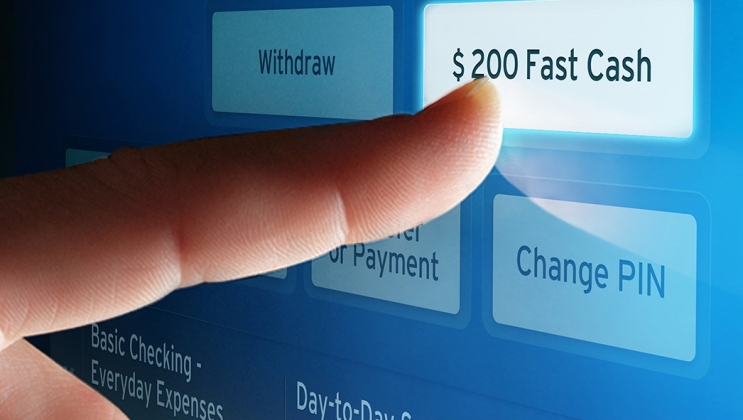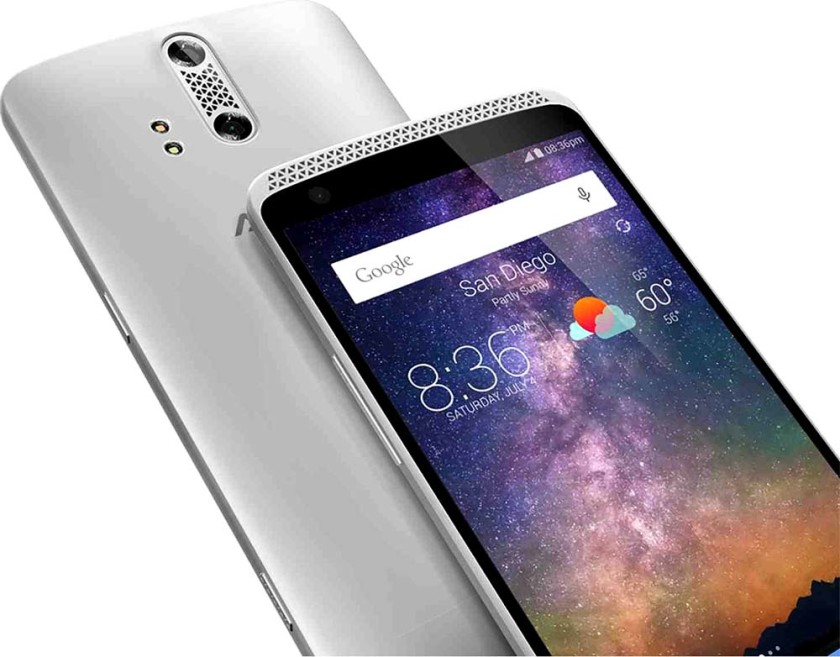The phrase “sick glass” is not high praise for transparent material.
It’s not even Internet jargon: the phrase has long been used in museums and galleries, where chemical interactions can actually turn clear glass cloudy and cause cracking to displayed objects or glass cases, leading to a condition that conservators call “sick glass”.
They could just as easily be referring to the touchscreens found on so many digital gadgets these days – from smartphones and tablets to ATMs and parking ticket dispensers.
In such cases, the chemical reaction is not inside the glass, but on its surface: germs and bacteria can actually make their home in the microscopic indentations and tiny surface fluctuations in any screen, and from there they can make all-too-easy contact with a person’s hands.

The touchscreen on your ATM may soon fight germs and bacteria.
Although finger-swiping your own touchscreen may just expose you to germs you are already carrying around (unless you are lending your device to tons of people everyday), much more concerning to health care professionals are the shared surfaces of a banking machine, a shopping mall wayfinding screen or other digital conveniences for public use.
“That devices can be a source of disease transmission is not a subject of debate anymore,” said Dr. Dubert Guerrero, a U.S.-based infectious disease specialist, and co-author of a study about the persistence of bacteria on iPads published in The American Journal of Infection Control.
There are recommendations to gently wipe a touchscreen clean, using warm mildly soapy water, but many device manufacturers warn against the use of alcohol-moistened wipes (although they are available on the market): the very substance that may help disinfect a screen may also damage the device itself.
So word that the glass itself can be a disinfectant – also called antimicrobial – has some folks breathing a little easier.
Corning, one of the world’s leading glass products developers and manufacturers, has come out with a glass that’s formulated with antimicrobial properties to help fight staining and odor-causing bacteria.
The glass is formulated with an embedded antimicrobial agent, ionic silver, which inhibits the growth of algae, mold, mildew, fungi and bacteria on its surface.
While the company makes no direct or implied claims to protecting users or providing other health benefits, it is touting its Antimicrobial Corning Gorilla Glass offering as the first EPA-registered antimicrobial cover glass. It’s said to combine the durability, scratch resistance and toughness that’s Gorilla Glass is known for, with a built-in antimicrobial property that lasts the lifetime of the display cover glass.
Smartphone-maker ZTE Corporation has chosen the new Antimicrobial Corning Gorilla Glass for its flagship smartphone in China, the ZTE Axon, and its 5.5-inch touchscreen.

New Antimicrobial Corning Gorilla Glass will be used on the ZTE Axon.
“With the rise of touch technology and our constant interaction with people and public surfaces, the microbes on our smartphones are not our own,” Corning’s Dr. Joydeep Lahiri, division vice president and program director, Specialty Surfaces, said when announcing the launch of the ZTE Axon.”
A person’s own smartphone is good to protect, for sure, but Lahiri was also on hand when the announcement was made that popular ATMs would also soon get the germ fighting screen technology.
“Touched by hundreds of users every day, the ATM is a universal shared touch device,” Lahiri noted as Corning and machine manufacturer Diebold announced that new ATMs would also have “lifelong antimicrobial activity that won’t compromise toughness or optical clarity.”
Diebold plans to offer the Antimicrobial Corning Gorilla Glass as an option on its expanding line of new self-service terminals and as a retrofit option for existing ATMs.
-30-
submitted by Lee Rickwood



